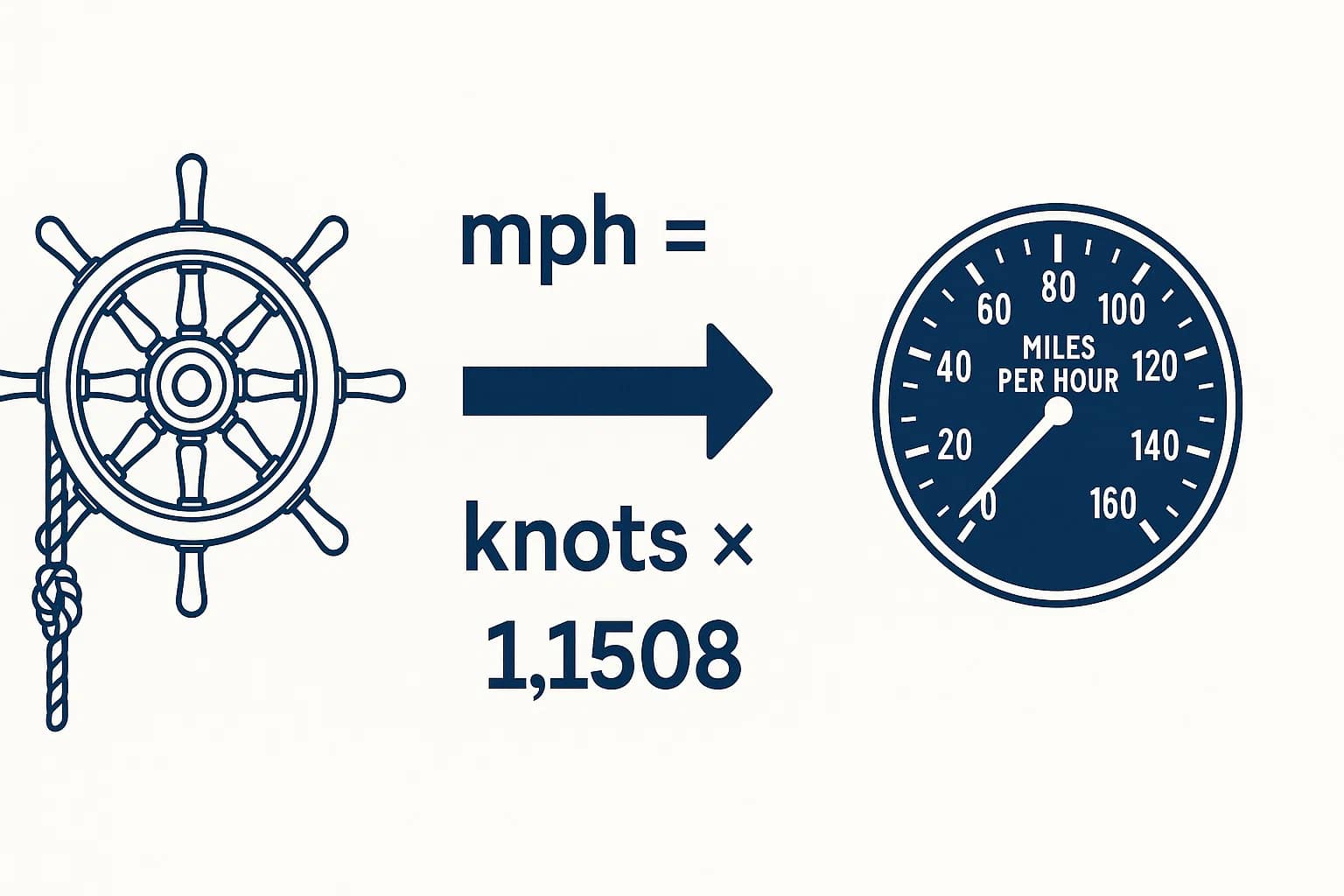knot to mile per hour – How to convert kn to mph
From sailing ships to modern aircraft, the knot is a classic unit of speed still widely used today. But when you want to compare maritime or aviation speed with familiar land-based measures, you’ll often need to convert knot to mile per hour. Whether you’re reading about a hurricane’s wind strength or a pilot’s cruising speed, knowing how to switch between kn and mph is both practical and insightful.
What is a knot (kn)?
A knot equals one nautical mile per hour. A nautical mile is based on Earth’s circumference and latitude-longitude system, making it perfect for navigation. One knot equals 1.1508 miles per hour.
What is a mile per hour (mph)?
A mile per hour expresses the number of miles traveled in one hour. It’s the most common speed unit in the United States and the United Kingdom, showing up on road signs, car dashboards, and aviation manuals.
How to convert knot to mile per hour
Mile per hour (mph) = Knot (kn) × 1.1508
Example:Mile per hour = 20 kn × 1.1508 = 23.02 mph

For quick and accurate results, the Speed Converter can do the math instantly. You’ll also find more tools on the Conversion Tools page.
Do you know?
-
About knots: The U.S. National Hurricane Center reports storm speeds in knots. For example, a hurricane with winds of 100 knots is traveling at about 115 mph.
-
About miles per hour: In NASCAR racing, cars often exceed 200 mph — around 174 knots — speeds that were once unimaginable in maritime travel.
The Concorde and the Battle of Units
When the Concorde, the legendary supersonic passenger jet, took to the skies in the 1970s, its speed made headlines. Cruising at more than Mach 2, it regularly flew at around 1,350 mph. But inside the cockpit, pilots used knots for most of their readings — around 1,175 knots at cruising altitude.
This mix of units sometimes puzzled the public. Newspapers printed Concorde’s records in mph for readers in the U.S. and U.K., while aviation specialists preferred knots. The result? A dual reporting system that highlighted how both units remained vital. For passengers, it meant bragging they flew “faster than a bullet.” For pilots, knots kept the navigation accurate across oceans.

The Concorde’s story shows that conversions like knot to mile per hour are not only practical but also part of the cultural fabric of how we talk about speed.
Bridging Sea, Sky, and Land
From sailors tying ropes centuries ago to supersonic jets breaking speed records, kn to mph links traditions of the sea with the modern world of highways and airways. With a simple multiplication by 1.1508, you can translate a ship’s log, a hurricane report, or a jet’s speed into a measure everyone understands. Conversions like this are small steps, but they keep our global language of motion consistent.

